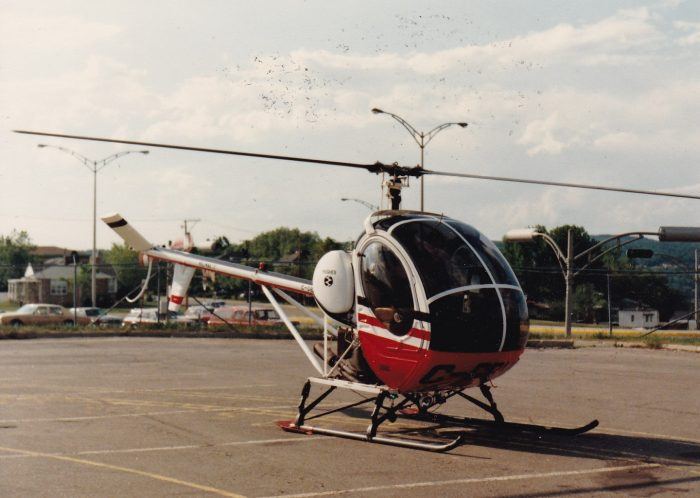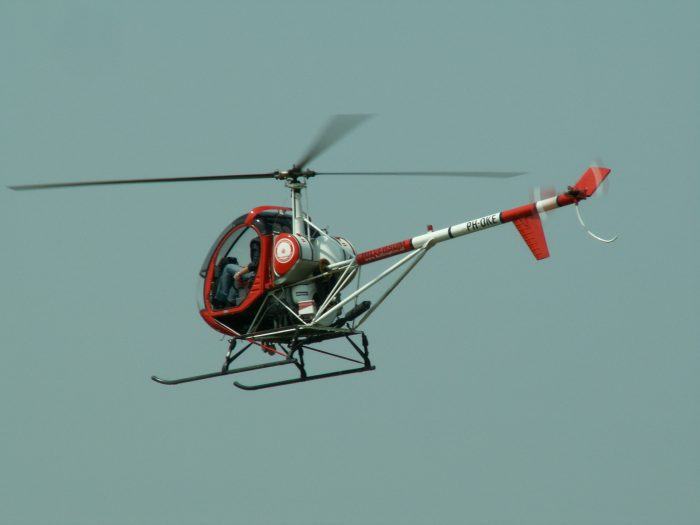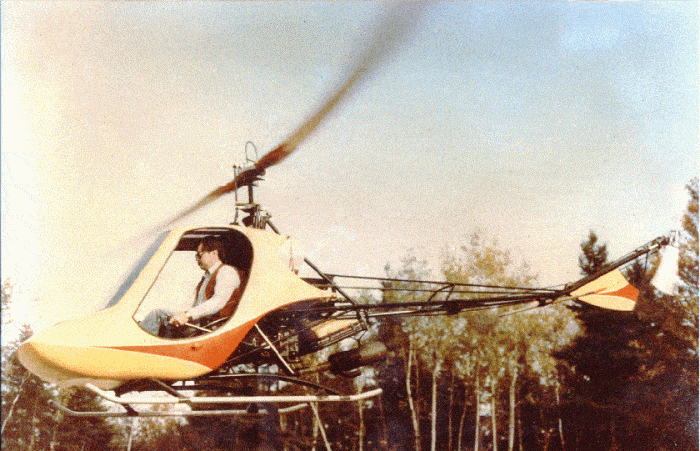I became fascinated with helicopters when I did my military service. Like Radar of M*A*S*H* I was a company clerk, except my outfit was a mechanized infantry battalion, not a medical unit. We would go on exercise and sometimes it involved planes and helicopters. As part of the country’s obligation to NATO, we were shipped for a few weeks to Norway where we took part in war games with other member nations. It was in the middle of winter and cold. I remember waking up in the morning and the five-gallon jerrycan of fresh water was frozen solid.
And it was inside the tent.
Winds of Change
We were in the northernmost part of Norway, near the Swedish and Finnish border. For some reason or other, they needed me to do some clerical work at another location. So, I was flown by helicopter, along with other personnel. It was a Bell 212, or more commonly known as a Twin Huey. It had two engines. Flying through the fjords of Norway, the wind was particularly virulent that day, so much so the pilot considered turning back. The sun was shining and the scenery was spectacular. Even though we bounced quite a bit getting there, I was hooked.
When I left my sales representative job with a major oil company, I attended flight school for my commercial pilot’s license. The training copters were Hughes 300C. Only one had a governor, which meant that when flying the other helicopters, you had to control the flow of fuel manually. The throttle was in the handle of the collective. That’s the stick on the side that allows you to change the pitch of the rotary blades in order to go up and down. The greatest advantage I found with the C version was that it had fuel injection. This meant you didn’t have to play with the carburetor heat all the time.
The course went well and I did my first solo around a dozen hours of flight time. I failed my first written exam, passed the second, and passed my first flight exam. To help us build flight times, the owner of the school would allow us to take a helicopter to fairs or mall parking lots to offer helicopter tours. After obtaining permissions and necessary permits, we were good to go. A section would be cordoned off and one of us would take care of loading and unloading the passengers in a safe manner, which included helping them with their seatbelts. You never wanted anyone to walk toward the tail rotor to be turned into ground meat.
Emergency Procedures
I remember one sightseeing flight in particular. This couple is loaded up in the helicopter. The woman was tiny and I don’t think she weighed a hundred pounds. She sat in the middle. The Hughes 300 could fit three people, but the middle seat was small, more suited to a child. Her husband was big and tall. I gave them headsets so we could talk, and I always tried to reassure people about flying in a helicopter, especially if it was their first time. The wife was quiet and not too sure about this since she had never flown in a helicopter. Her husband on the other hand boasted that he had flown many times in Jet Rangers. Those are Bell 206 helicopters with a single engine.
After obtaining permission from air traffic control to take off, I started the tour. Not far from the mall area, there were high tension wires going to a hydro station in the distance. The towers holding the lines were fairly tall, and we had to be at an altitude of 300 feet in order to fly over them. The flight was going well, the day was clear, and the woman was starting to relax. As soon as we flew past the hydro lines, I heard a bang coming from the engine and experienced a sudden yaw of the ship.
The greatest emphasis of learning how to fly is placed on emergency procedures. In the case of helicopters, autorotation is practiced quite a bit. Autorotation is achieved by lowering the collective which disengages the transmission, essentially putting it in neutral. This way, the rotor can spin freely and you control the speed as you descend and flare at the last minute, bring the ship level and land. In this particular case, I could not really autorotate.
Scouting For Locations
There was a four-lane highway ahead. I could not turn around because I was losing altitude and would have had to deal with the hydro lines. There was tall grass all along the side of the highway. And in the distance, there was the hydro station. After I quickly looked at the dials, and realizing the engine was still running, I cranked up the throttle. The needles went into the red, but I didn’t care. It gave me more power and time to find a better place to land a ship that was still going down. Not far from the hydro station was a Toyota dealership. I briefly talked to the passengers in a reassuring manner.
I steered the helicopter toward the parking lot where I could see space on the closest side to us, near a number of new cars parked there. At the edge of the pavement, tall grass was growing. I managed to stretch the flight and land the skids on the pavement. The tail of the helicopter was over the grass. The machine could have flipped over if I had landed in the tall grass since there could have been a depression in the terrain. That’s why I didn’t try to land in the tall grass adjacent to the highway.
The couple had been accompanied by another couple who were going to take the tour next. They saw we had gone down, so they made their way to the Toyota dealership. We hadn’t even landed and the husband was clawing his way out, scrambling to find the door handle. I think he was halfway to his friend’s car by the time the main rotor had stopped turning. The wife was still sitting beside me. She turned to me and said, “that’s what a helicopter engine failure is like?” I replied “yes” without wanting to go into other details. Then she smiled and said, “I’ll fly again.” We reimbursed their fare and I explained to the dealership owner what had happened. He was mowing the lawn in front of the sales office, wondering why a helicopter had landed on his car lot.
Safe & Sound
I called the office to explain the situation and the mechanic showed up at about the same time as a flat bed truck. They removed the blades and loaded up the helicopter. It had not suffered a scratch, nor was a Toyota dinged, but more importantly, nobody was hurt. Every 1,200 hours, the Franklin engines on those helicopters have to be overhauled. This particular engine had 1,165 hours. Because I was fresh out of flight school, I was able to put my training to good use. It turned out that one of the valves got stuck in the cylinder and was smashed by the piston. With the loss of compression, the engine was running on only 3 cylinders, not enough to keep the helicopter aloft with three people onboard.
I flew a few more times professionally. Things like marine survey, taking Santa Claus to the mall, and flying over parks with a ranger to catch poachers. Returning from a park gig one time I got lost, even with a map on my lap. It was dusk. Nearing a small town, I flew low knowing there would be a sign at the entrance to tell folks where they were. Sure enough, the name of the town was on a sign and I was able to get back to my map and make it to base. That was in the early 1980s. They said it was a recession, but it was more like a depression, for those who recall. A lot of companies cut on expenses, such as hiring helicopters. I had to find another source of employment; that of chauffeur to government officials.
Common Ground
Helicopters and automobiles do have one thing in common: gasoline engines. Same thing with my 40-year-old snowblower. It has an 8 horsepower Briggs & Stratton engine. I finally treated it to an electronic ignition coil to replace the points and condenser. The Hughes 300 helicopters were powered by Franklin horizontally opposed 4-cylinder engines developing 190 horsepower. Franklin engines have been around since 1902 and still power a lot of small helicopters. It even powered the Tucker 48 until, it is rumored, other car manufacturers and a certain Senator ganged up on the Tucker Corporation and they were forced to stop production.
Briggs & Stratton have been around since 1908. Steven Briggs and Harold Stratton wanted to build a gas-powered vehicle and ended up manufacturing small engines for all sorts of applications. They are the world’s largest producer of small gasoline engines. It is certain that you or one of your neighbors have a machine that is powered by a Briggs and Stratton engine.
I simply find engines interesting. I once flew a Rotorway Scorpion II home-built helicopter. It had an Evinrude engine in it. It came with the kit. From gasoline engines for cars, trucks, and tractors, to gasoline engines for your generators, four-wheelers, snowmobiles, Sea-Doos, lawn mowers, and snow blowers; to engines for boats, planes, and helicopters, I for one, am very grateful for gasoline engines.
Michael Bellamy is the author of our Memory Lane series. He enjoys driving his 1997 Lincoln Mark VIII LSC and 2003 Dodge Dakota.
from Automoblog.net http://ift.tt/2n12Irm




No comments:
Post a Comment